Cycling the South Downs Way double: how hard is it really?
At over 320 kilometers long and with 7,000 metres of climbing (200 miles and 23,000 feet), it was never going to be a walk in the park...
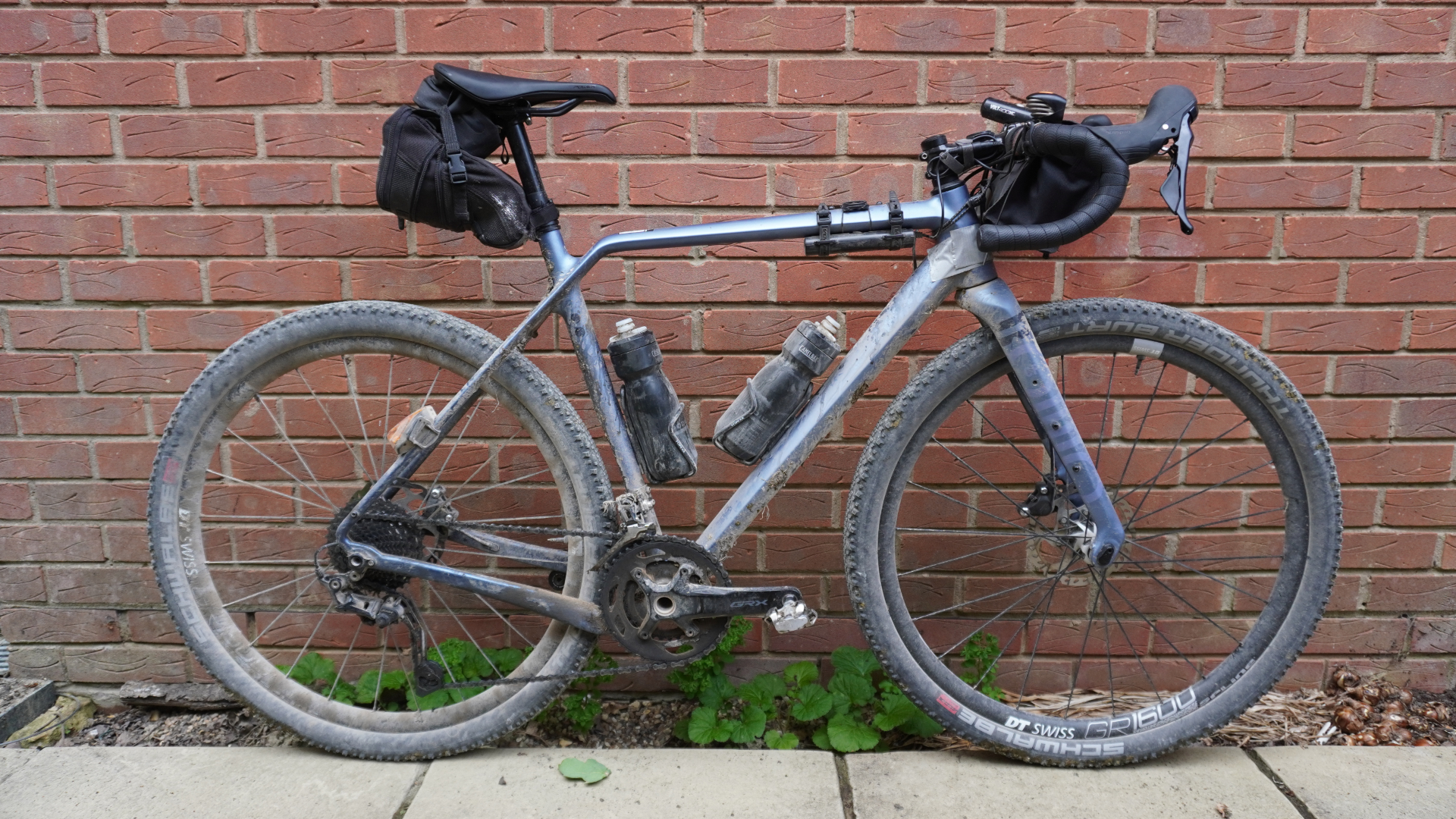

You’ve probably heard of the South Downs Way. It’s one of the UK’s most famous National Trails and covers for 100 miles of chalky bridleway, all the way from Winchester – that ancient seat of Saxon power – to Eastbourne, on the Sussex coast.
The much travelled path bears a special significance for me, as the setting of my first forays into cycling. Without a head unit, or any real form of mapping, my weekends consisted of quickly cruising down the road to get to the ridgeline, and then once on the hilltops I could just follow the signposts until I felt it was time to head back.
Progress for me was then marked by distance: if I could get to the right turn before Blackcap, how about the A27 crossing? Down into Southease? Firle Bostal? Following that to its conclusion, finding a day on which to complete the entire South Downs Way soon became almost a yearly pilgrimage.
During that time, I was gradually becoming aware of the South Downs double – the challenge being to cover every inch of the South Downs Way, in both directions, within 24 hours. In 2011, I read Josh Ibbett’s report of his record-breaking ride of the double (17:47:30, since reclaimed by Ian Leitch in 2016 in 15:35:00).
Then, in 2012, Richard Sterry took matters a stage further, completing the first South Downs triple in 37 hours and 4 minutes. The ante was upped again in 2015 by Rob Colliver, completing the double double (AKA, the quadruple) in around 55 hours.
Those are maybe a bit much to even contemplate, but the fire underneath the double had certainly been lit...
The bike
Most successful double attempts have been achieved on mountain bikes, but having spent so many hours riding both MTBs and some of the best gravel bikes on the Downs, I felt that opting for a curly barred bike would offer me the best chance of success.
My choice was quite counter intuitive on the face of it: the average speeds when riding the Downs are quite low – and even then, as it’s so hilly, most of your time is spent cycling far slower, whilst when you’re at the higher speeds you’re generally covering the breaks more than trying to minimise your CdA.
However, I’ve battled through enough headwinds up on the hills to know that there’s a considerable amount of time that can be saved by tucking up. Although I was never going to be challenging for the record, to even complete the double I was going to need to optimise.
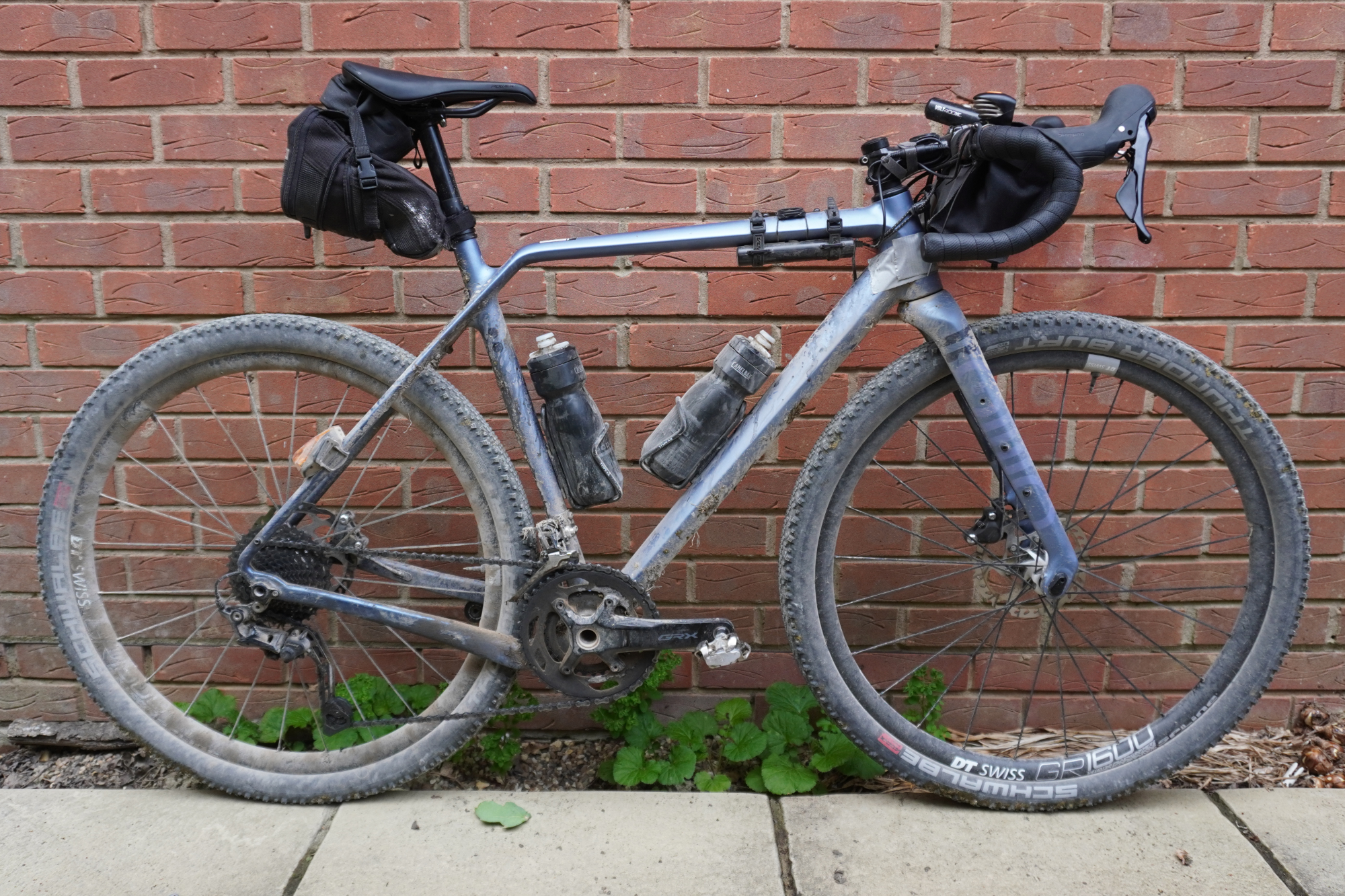
Having decided to use a gravel bike, now I just needed to find one with sufficiently lower gearing and wide enough tyre clearance. In the end, I opted for a Rondo Ruut CF2, rated for use with 57mm (2.2 inch) 650b tyres and Shimano’s 2x10 GRX groupset, offering a bottom gear of 30x36 (which is one of lowest stock setups you can get, but still quite meaty compared to a mountain bike).
The wheelset the bike came with was 700c, but Madison was kind enough to provide me with a 650b set of the DT Swiss GR1600 wheels while Schwalbe sent over a pair of 2.1x27.5 inch Thunder Burt mountain bike tyres to fit them with, which I ran with 21psi in the front and 23psi in the rear.
It was good to be a bit conservative with the width, although there was oodles of room in the fork, clearance around the chainstays was a little tight and a larger tyre would have been pushing it.

Interestingly, although Schwalbe produces four different Addix compounds for its mountain bike tyres (Speed, SpeedGrip, Soft, UltraSoft), the speed compound is reserved for XC race tyres – the gravel line just gets the SpeedGrip. Ordinarily, this isn’t an issue, SpeedGrip is a very good balance, but for this ride it was nice to have the psychological reassurance of being on the fastest rubber.
I swapped in my favourite gravel handlebars, the Salsa Cowbell, measuring 38cm at the tops and with 12 degrees of flare, splaying out to 40cm at the drops. I really get on with the shape, finding the hood position sufficiently narrow, while still being stable enough in the drops for the descents.
The kit
Starting from the front, the accessories I had attached to the bike included an old and faithful Alpkit Hadron front light with a claimed 2000L and a Lezyne Volt 400 XC as backup. The handlebar bag was a Chrome Urban Ex Handlebar Bag 2.0, further secured to the bars with zip ties, as rattling spells death to any piece of kit out on the Downs. Finally, for my head unit I was using a Garmin 530.
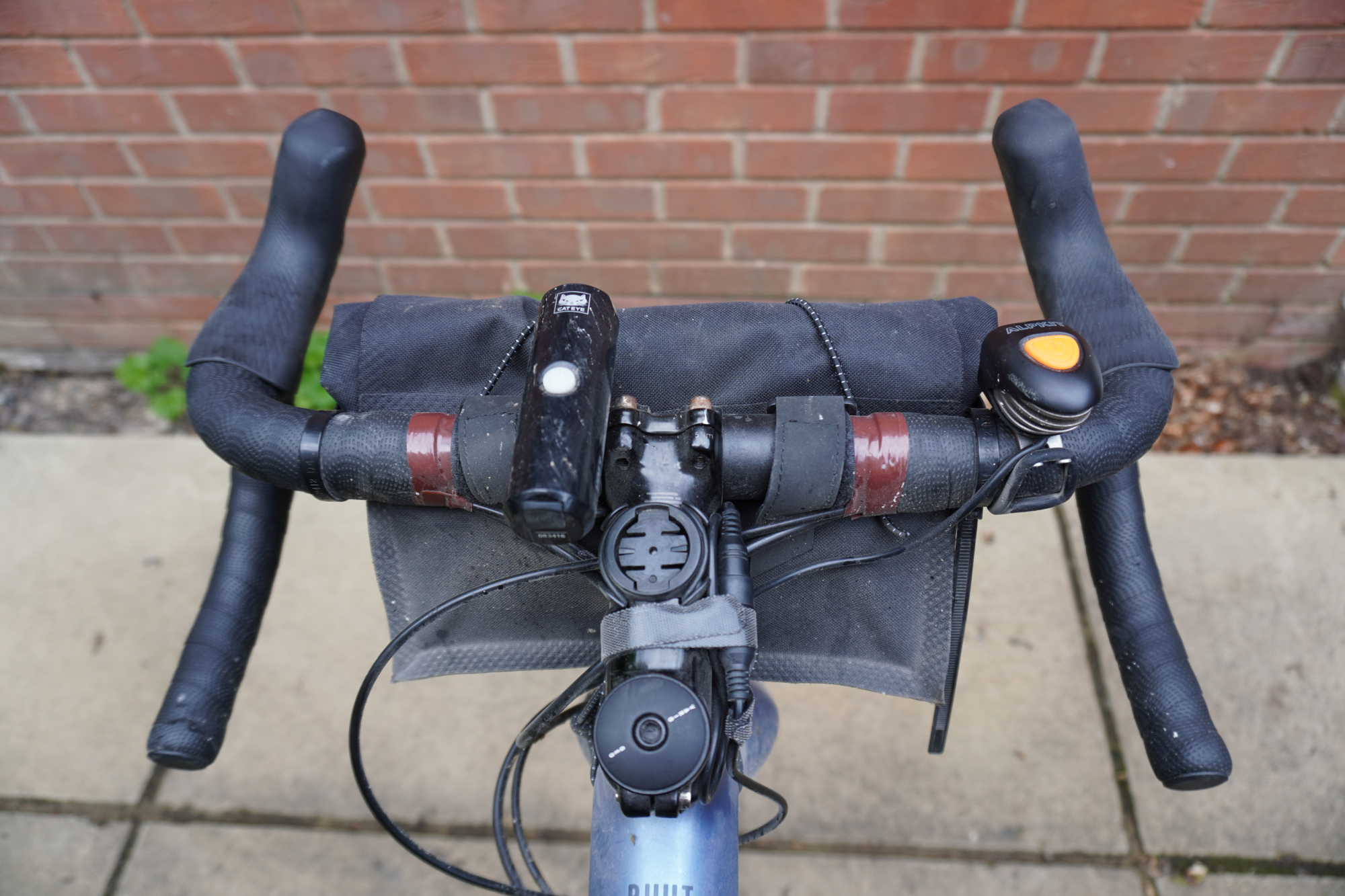
Initially, I was going to go with a larger saddle pack setup, but on the night before the attempt I became a little nervous about how it would fare once I had gotten through most of my nutrition and things started rattling around.
My solution was quite a bodge. I first attached a small Fizik saddle bag with spare tubes, tyre levers, multitool and a tubeless repair kit. Then, I dug out an old Topeak 2L Aero Wedge saddle bag from the days before giant saddles bags really took off and proceeded to attach this to the Fizik saddle bag to store my nutrition.
It actually worked flawlessly, being lightweight, low profile and having no problems with the rattling, albeit the untested solution did cause a little pre-ride anxiety.
My rear light was a Lezyne Laser Drive Rear 250 and I attached this to the driveside seatstay.
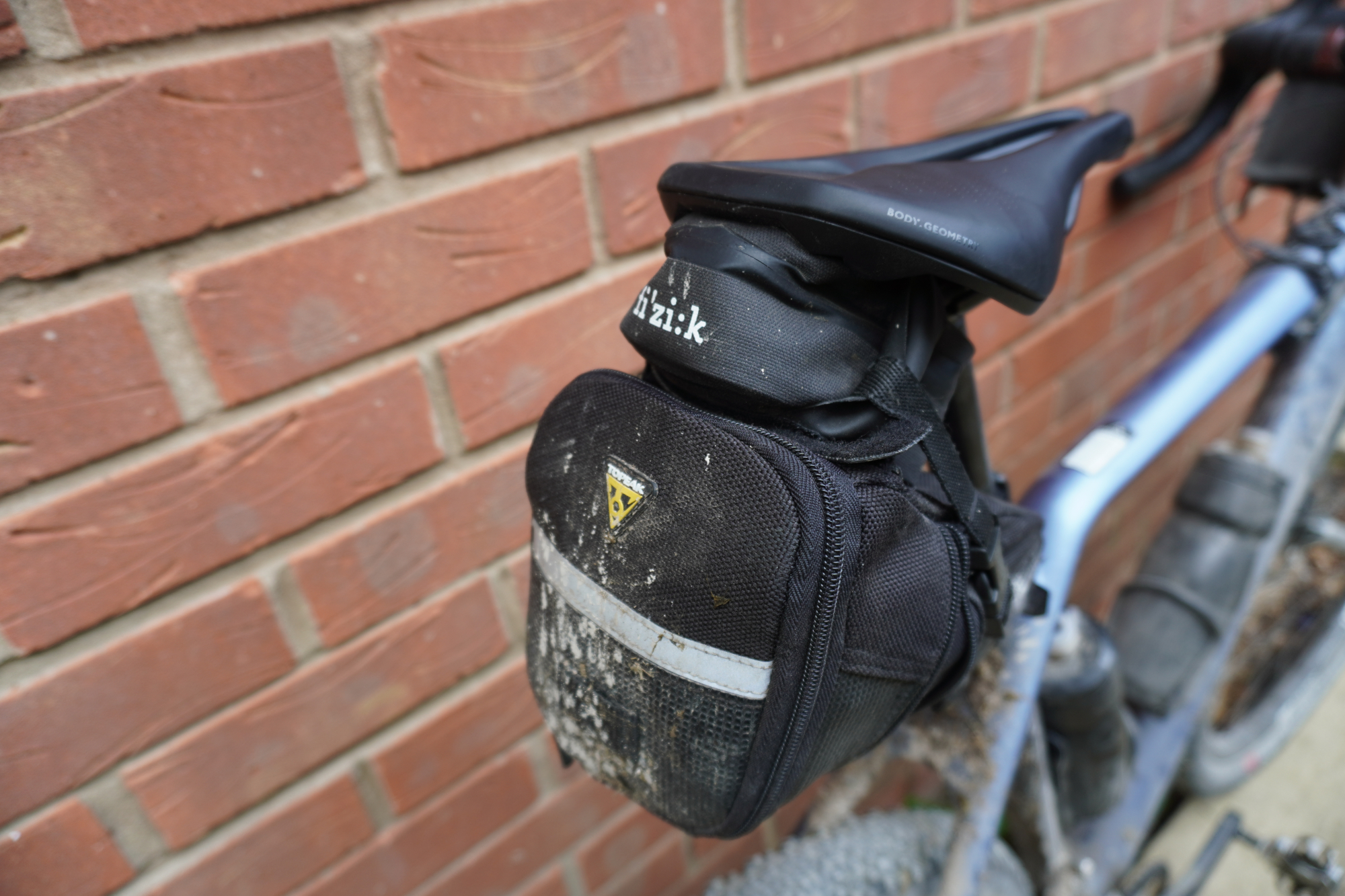
Nutrition-wise, I was mainly using SiS’s new Beta Fuel powder. With its 44:56 split between complex carbs and sugars (respectively), it provided a pretty good balance between fuelling for the long haul and still perking me up with a bit of a sugar high. Coming in 82g sachets, it was pretty much the perfect dose, one per bottle.
Doing the double unsupported meant carrying all my nutrition with me and powders are essentially as efficient as you can get, calorie per gram (the water content of other food is quite surprising). With about a dozen publicly accessible taps along the way, keeping the bottles topped up was never going to be an issue.
But even then, I brought 9 sausage rolls in addition to the 18 sachets. I find having something savoury with a bit of protein really makes all the difference on any ride above seven hours. I also brought 200g of chocolate for something energy dense, but solid, should I get sick of the sweet drinks after hour 15 or so.
The ride
The plan was to wake up at 03:00 to get to Ditchling Beacon for 04:00 – setting off a little before sunrise; it’s generally still light enough to see by even then. I wanted to minimise the amount of night riding I would be doing while still also getting a reasonable-ish amount of sleep.
As the goal is to cover every part of the SDW in both directions, it doesn’t actually matter where you start from, you end up in the same place. So, since Ditchling Beacon is the closest point on the Downs to me, I limited travel time by making that my start/finish. The current record holder Ian Leitch started himself at around the mid point of the route, near Amberly.
As it happened, I woke up naturally at around 00:30 and felt really quite alert. Realising that it would take ages to get back to sleep and that I’d probably feel much more groggy when the alarm did eventually go off, I decided just to get up and go.
My start time ended up being about 01:30, which was pretty much ideal. It meant I got the night riding out of the way when I was most alert and was also best able to keep myself warm by pressing on the pedals a little harder. 20 hours was my target and that would take me to 21:30, just after sun set.
Although the decision to start a little earlier worked out great, putting my Garmin in battery saving mode and going off memory and the SDW route signs really did not. I overestimated just how well I could remember the route, taking wrong turns on numerous occasions, and I underestimated just how much I would have to pull on the brakes in order to read the signs and be sure I was going the right way.
The first sixth from Ditchling to Eastbourne went without a hitch. The riding was fast with hardly anyone else about on the trails. I did come across two other cyclists, as well as a runner with a chaperone on a mountain bike – judging by the look I guess he had come all the way from Winchester.
The only thing to worry about was the oddly full fields of sheep, which for some reason had decided to bed down all across the path. Turns out like cats, sheep have quite reflective eyes, and it was oddly eerie riding through the darkness with a hundred pairs starting right at you.
The next 50 miles from Eastbourne to Amberly went by smoothly, just stopping every three hours or so to fill up the water bottles while taking the opportunity to eat a sausage roll. But as I got closer to Cocking, the dust stripped my chain dry. It wasn’t just the noise making a nuisance, it really surprised me just how much more effort it was taking to turn the pedals.
I asked at the Upwaltham Cadence Cafe Hub as I passed by, but unfortunately, they had neither chain lube nor any form of cooking or olive oil. Passing up the offer to apply some butter, I decided to press on to the QEII bike park and ask there instead.
This was a fair bit further than I had anticipated and even then, it turned out they didn't have any lube either. Very kindly, though, they did give me some cooking oil and after a liberal dousing the chain was running much more smoothly. If it wasn't for that, I'm not sure I would have been able to make it past Winchester, such was the racket and increased friction.
The flatter bit to Winchester provided some much needed respite; the effort was starting to bite. By the time I got back to QEII, I was really suffering, my soles were sore from the pedalling and vibrations and the sides were starting to feel a little pinched.
My hands were blistering around the palm from holding the hoods and at the heel they were becoming bruised from taking the hits of the descents in the drops. I found holding the very top part of the hoods was the most comfortable position, but this was quite unstable.
My biceps, triceps, and all the muscles down the side and centre of my back were torn up from climbing out the saddle and holding steady on the descents. My ligaments around my joints in my hip and knees were protesting and sitting in the saddle was quite painful from chafing and the impacts.
And I still had 33 miles to go from QEII back to Ditchling Beacon.
It was quickly dawning on me that getting sub 20 hours was going to be a struggle and that I’d really have to fight for it. I got a bit of a second wind after Amberly, some of the pain in my hands, feet, leg joints and upper body left me and I was able to press on the pedals a little harder and actually get some power out.
It was going to take me a bit over three hours to get to Ditchling Beacon from Amberly. I tried telling myself that it wasn’t long and soon it would be over, but a three hour ride isn’t shabby in itself. That last push was where the struggle really descended. Although I can remember balking at the horror, looking back now, I can’t really call up the feelings as they were – though that may be for the best.
By the self-imposed finish line, I had clocked a moving time of 19:09:42 and a total time of 19:59:57. That I was stopped for only 50 minutes over essentially 20 hours I found quite a surprise.
There were things I could have done better – actually loading the route, and also bringing some spare lube – but I can’t complain with my time, three seconds within the target.
There are so many unknowns and variables out there on the Downs. The weather was pretty perfect for my attempt and I didn’t have any punctures – both of which make perhaps the greatest impact on how long the double takes.
If I was to try again with what I’ve learnt, I could well end up with a slower time. But I don’t think I’ll be doing that, after going so deep for so long with this one, I think I’m going to keep things short for the foreseeable future. No more than 6 hours.

Thank you for reading 20 articles this month* Join now for unlimited access
Enjoy your first month for just £1 / $1 / €1
*Read 5 free articles per month without a subscription

Join now for unlimited access
Try first month for just £1 / $1 / €1
Get The Leadout Newsletter
The latest race content, interviews, features, reviews and expert buying guides, direct to your inbox!

After winning the 2019 National Single-Speed Cross-Country Mountain Biking Championships and claiming the plushie unicorn (true story), Stefan swapped the flat-bars for drop-bars and has never looked back.
Since then, he’s earnt his 2ⁿᵈ cat racing licence in his first season racing as a third, completed the South Downs Double in under 20 hours and Everested in under 12.
But his favourite rides are multiday bikepacking trips, with all the huge amount of cycling tech and long days spent exploring new roads and trails - as well as histories and cultures. Most recently, he’s spent two weeks riding from Budapest into the mountains of Slovakia.
Height: 177cm
Weight: 67–69kg
-
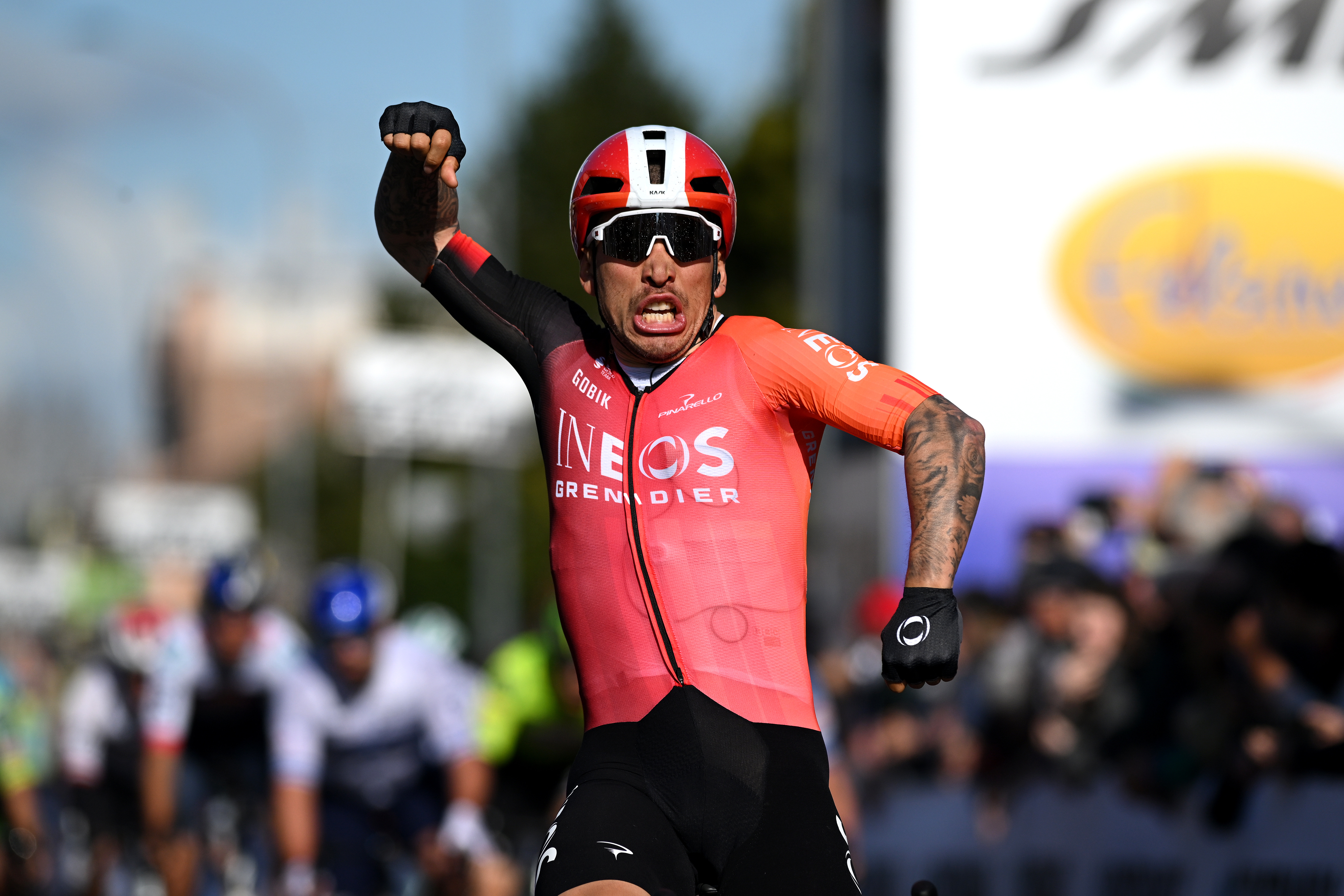 'It can really push me along' - How a velodrome comeback is making Caleb Ewan faster on the road
'It can really push me along' - How a velodrome comeback is making Caleb Ewan faster on the roadAustralian says he'll "definitely" continue track work after rekindling passion
By Tom Davidson
-
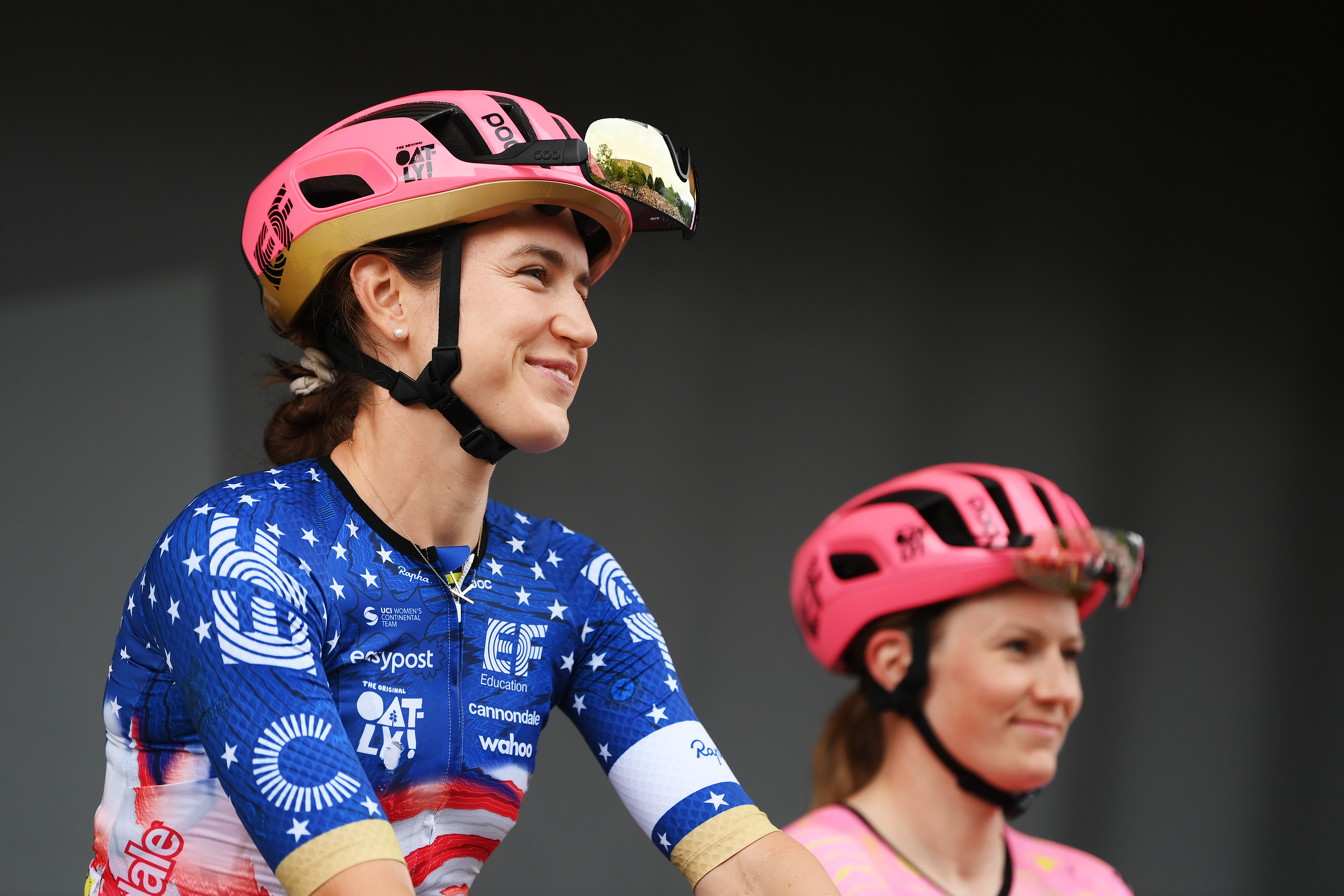 'I've worked a lot on my sprint' - Kristen Faulkner plots unpredictability on racing return
'I've worked a lot on my sprint' - Kristen Faulkner plots unpredictability on racing returnOlympic champion looking forward to "exciting challenge" of continuing to outfox bunch
By Tom Davidson